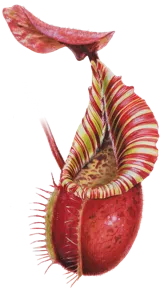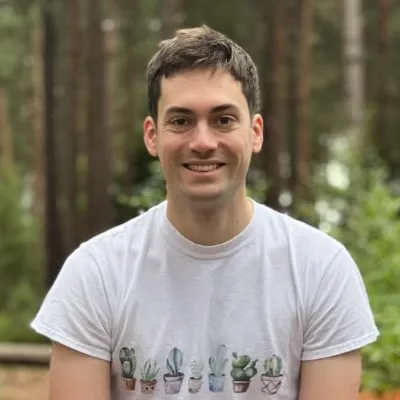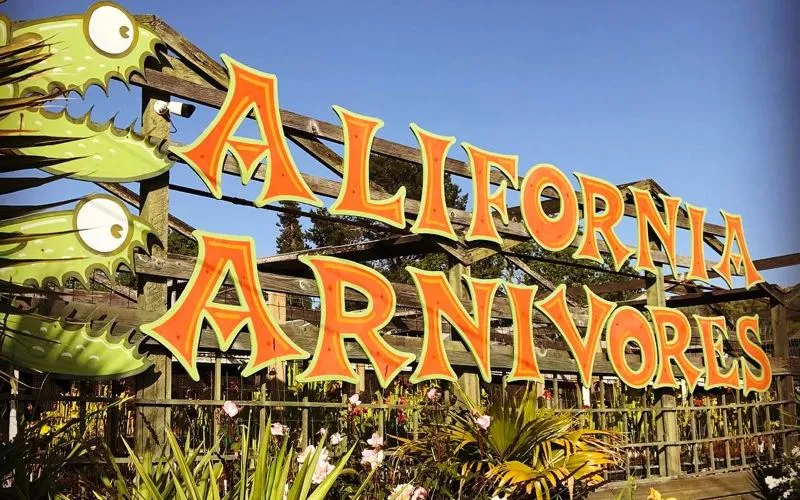California Carnivores has been operating for over 25 years and is the largest retail carnivorous plant nursery in the US. Owner and founder Peter D’Amato is a frequent contributor to the ICPS Newsletter, co-founder of the Bay Area Carnivorous Plant Society, and author of The Savage Garden, one of the bestselling books in the genre. I recently got the opportunity to speak to him about California Carnivores’ breeding programs, conservation efforts, and future plans - read on!
Could you give an introduction to California Carnivores and the work it does today?
I started California Carnivores in 1989 after a display I did at a large San Francisco garden show drew enormous attention, and there was virtually nowhere for folks to buy carnivorous plants here in the U.S. We opened to the public in spring of 1990 to much media attention like the New York Times, Wall Street Journal, San Francisco papers, and TV shows.
Back then, nearly all CP had to be propagated by old fashioned methods. Tissue culture didn’t become popular until the mid-1990s, and even then it was slow getting plants in vitro. We were (and maybe still are) the only CP nursery in the world to keep regular business hours, and we house one of the largest collections in the world that is open to the public.
We started mail order in 1992 and had one of the first websites dealing with these plants at the time. In 1996 I was approached by Ten Speed Press to write a book, and two years later The Savage Garden was released and won two book awards. I revised and updated the book in 2013 and it remains a bestseller in the genre with at least 18 printings.
Damon Collingsworth joined us as a partner around ten years ago and now manages the nursery along with office manager Daniela Ribbecke. Damon also did much of the new photography for the revised version of our book. We hired Mike Wilder three years ago to manage our new tissue culture lab.
We ship our plants currently only within the United States, and offer only potted established plants. We’re also one of the most popular tourist attractions in the Wine Country of Sonoma County, about an hour north of San Francisco.
Could you tell me a little more about your Nepenthes and Heliamphora breeding programs?
Mike runs our tissue culture lab. Damon has been pollinating dozens of new hybrids/species of not only Nepenthes and Heliamphora, but also Venus Flytraps and other genera, especially Pinguicula. The results are often startling and beautiful, and we know many thousands of new plants will gradually be added to collections of hard-to-obtain rare CP.
Carnivorous plants often fascinate people who might otherwise have had little interest in botany, conservation, or gardening. How do you take advantage of this?
I exploited the appeal of CP in my first public display back in 1989, and that was simply showing people beautifully grown carnivorous plants and telling them honestly how to grow them.
What are some of the ways hobbyists can help stop habitat destruction, poaching, and any other practices you’d consider to be major threats?
The best way to try and save CP habitats from destruction is to support the many foundations and organizations that save habitats by buying and managing them. The Nature Conservatory is one example, but many botanical gardens also need support to save CP in the wild. Here in the States, the Atlanta Botanical Gardens is one such resource.
On our website, customers can donate money to save Sarracenia in the wild, but most often that’s the removal of plants from a habitat to be destroyed and attempting to re-locate them to nearby similar habitats. In reality, the outlook is grim not only for CP but many other forms of life.
What are the best carnivorous plants for beginners, and what advice would you offer to new growers?
There are many plants suitable for beginners, such as Venus Flytraps, Cape Sundews, and American Pitcher Plants, but others like Mexican Butterworts and Tropical Pitcher Plants can also be rather easy.
One of the most important requirements is pure water and especially the light! Many CP prefer FULL SUN outdoors during the growing season, or good quality grow lights. When we see poorly grown plants it is usually the low lighting or hard, mineral-laden water.
When it comes to CPs, what are you most excited about right now?
We are most excited about our tissue culture lab and the amazing plants coming out of it. And like with roses, African violets, and orchids, hybrids are the future of CP, even while new species are being discovered every year, like the vast amounts of Nepenthes that are still out there waiting to be discovered.
It also appears we will be co-hosting the semi-annual International Society’s conference, set to be here in Sonoma County in August of 2018!
What’s your personal favourite species or hybrid?
What carnivorous plant is my favorite? Whichever one I’m looking at!!!
Thanks to Peter D’Amato and the team at California Carnivores. All photos courtesy of Damon Collingsworth, who you should definitely follow on Instagram. Peter’s book - The Savage Garden - is available directly from California Carnivores in the US, or from Amazon in the UK.


